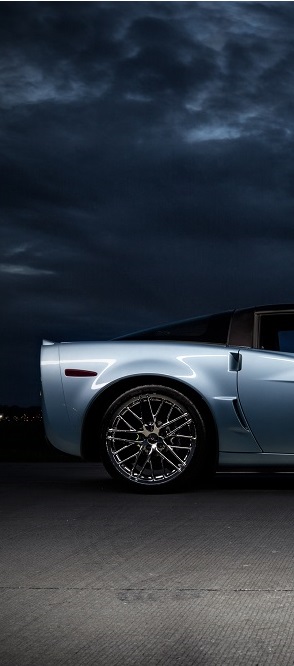

Dodge Charger & Charger R/T 1968-1970
The Dodge Charger prototype was on the automotive showroom circuit by 1965 to gauge the public’s response to another class of personal luxury muscle car. The new Charger had a fastback and racing stripes that gave the car a sporty look, which did arouse public interest.
The Charger is on the Chrysler Coronet “B” body platform and uses many of the same components. The luxurious mid-sized AMC Marlin and the Dodge Charger both sport a radically long rear window, a fastback, setting a new course for the rest of the industry to follow, should it chose to. This new model was aimed as direct competition with, not only the smaller pony class Mustang and the two-seated Thunderbird, but also to the Plymouth Barracuda. The first generation Charger became available to the public late in the spring of 1966 and stayed the same through 1967.
The second-generation Charger, produced from 1968 until 1970, was, in the opinion of many, one of the most well designed and appealing vehicles ever made. These cars are among the most coveted muscle cars ever produced. For the ’69 model year, the base Charger had a 383-cubic-inch (6.7L) engine, which could have either a two-barrel carburetor that produced 290 hp or the four-barrel version, which developed 300 hp. The distinctive pie plate air cleaner displayed the 383/four barrel and identified this option, which was unique to the Charger for this one year only.
In ’69, if you chose the Charger RT, you could have the Magnum 440-cubic-inch (7.2L) engine with a four-barrel for 375 hp (279.5 kW) or the 426-cubic-inch (7.0L) Hemi engine with two four-barrel carburetors developing 425 hp (317 kW). For five more horsepower an “un-silenced” air cleaner was an option, and this particular version differed internally from the other 383 Magnum power plant in the Super Bee or the RoadRunner.
The two 383 engines used different valve springs, and had unique cam profiles, while the Magnum version also had a windage tray in the oil pan. Both engines used the same Carter AVS carburetors and sported the same exhaust manifolds as the larger 440 Magnum engines. There were five engines available for the Charger from the 225-cubic-inch six up to the 440-cubic-inch V8s that could couple with either of two three-speed automatic transmissions Also available was a three- or a four-speed to cover the two standard shifting options. Generally, all 1969 B series engines were turquoise, but both the Magnum power 440 choices and the 335 hp 383 were “Street Hemi Orange.”
For 1969, the Charger R/T had a revised grille with a divided center with horizontally configured taillights. There was a new trim option on the table in the form of the Special Edition or the SE, which could be ordered on its own for any Charger, including the RT. The SE package added front seat leather inserts, wood grain dash/steering wheel, and chromed rocker covers. There was also a seldom-seen option of a sunroof with only 260 units so equipped originally.
The bumblebee stripes were back, but slightly revised with one broad stripe between two narrower ones running down each rear quarter panel from the trunk lid. There was an R/T cutout in the center of the stripe and middle of the fender, or, if the stripe was deleted, then a metal R/T logo is in its place. The General Lee is a ’69 Charger used in the television series The Dukes of Hazzard, which ran from 1979 to 1985. The car had a confederate flag on the roof with 01 painted on each door and a horn that played Dixie. There were 89,199 Charger units produced in 1969.
Republished by Blog Post Promoter







